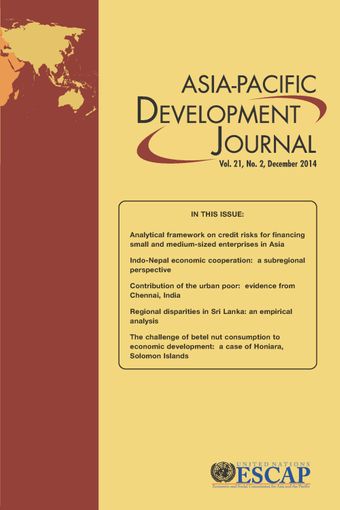-
Regional disparities in Sri Lanka: An empirical analysis
- Source: Asia-Pacific Development Journal, Volume 21, Issue 2, Dec 2015, p. 77 - 102
-
- 15 Dec 2015
Abstract
To effectively implement the proposed United Nations development agenda beyond 2015, Governments will need to focus on reducing inequality in their national planning strategies. In order to provide an evidence base for such planning in the Sri Lankan context, a systematic and comprehensive analysis on regional inequality is required. The present study begins to undertake this type of analysis using summary sigma convergence statistics, such as the coefficient of variation, the Gini coefficient and mean deviation scores. Regional gross domestic product (GDP) per capita data for the period 1996 to 2011 reveal that inequality with respect to this welfare indicator is considerable. Analysis of trends, over this 16-year period, indicates that while some beta convergence has occurred since 2000, this convergence (both conditional and unconditional) is not statistically significant. Indeed, the results suggest that based on current trends, it will take 15 years to halve the current inequality and about 30 years to achieve a regionally balanced economy. In this context, well-planned regionally inclusive development strategies are needed in order for Sri Lanka to move forward, especially since the current levels of regional disparity are argued by some to have contributed to the civil unrest and conflict that led to a reduction in national economic development over the three decades to 2009.
© United Nations





